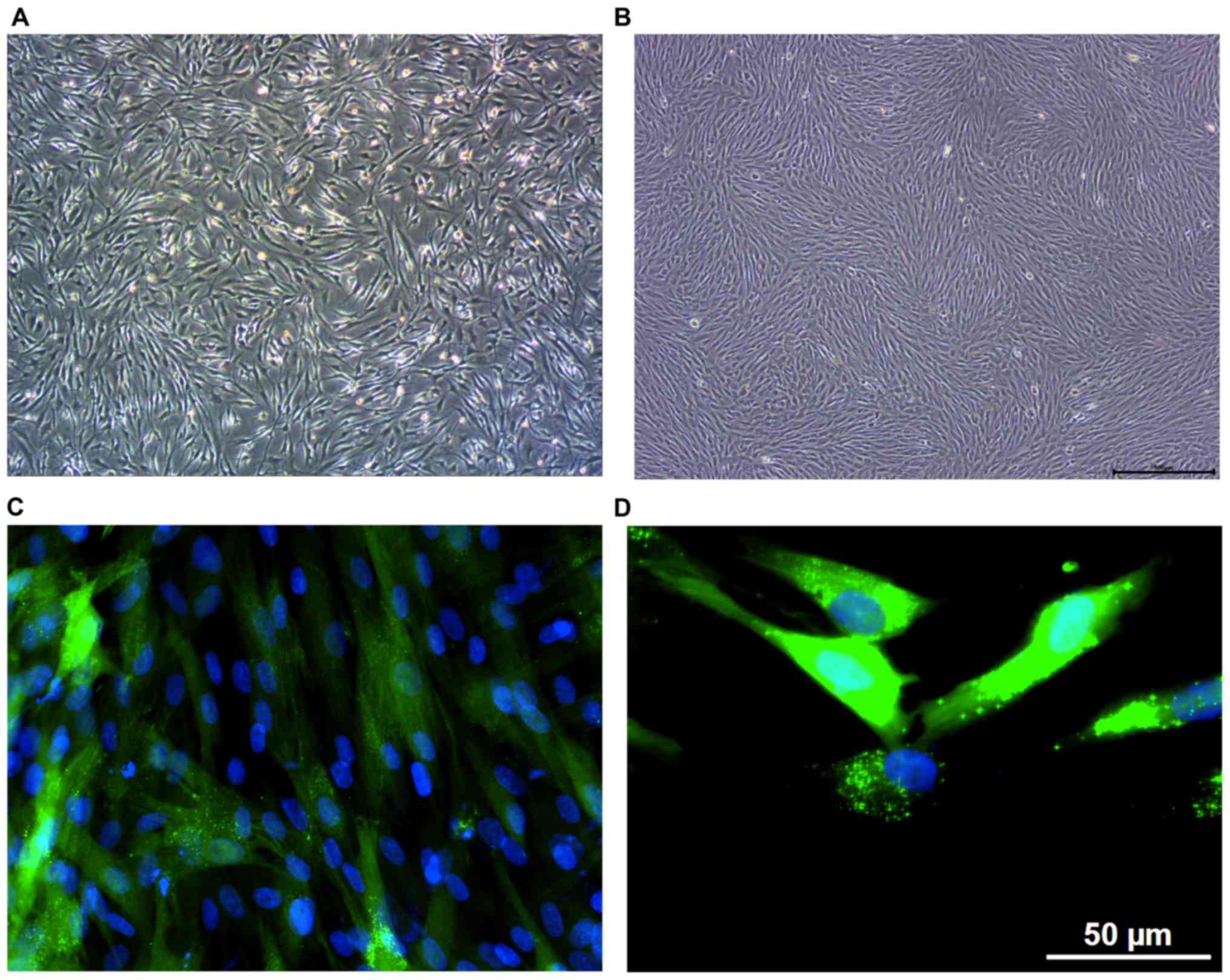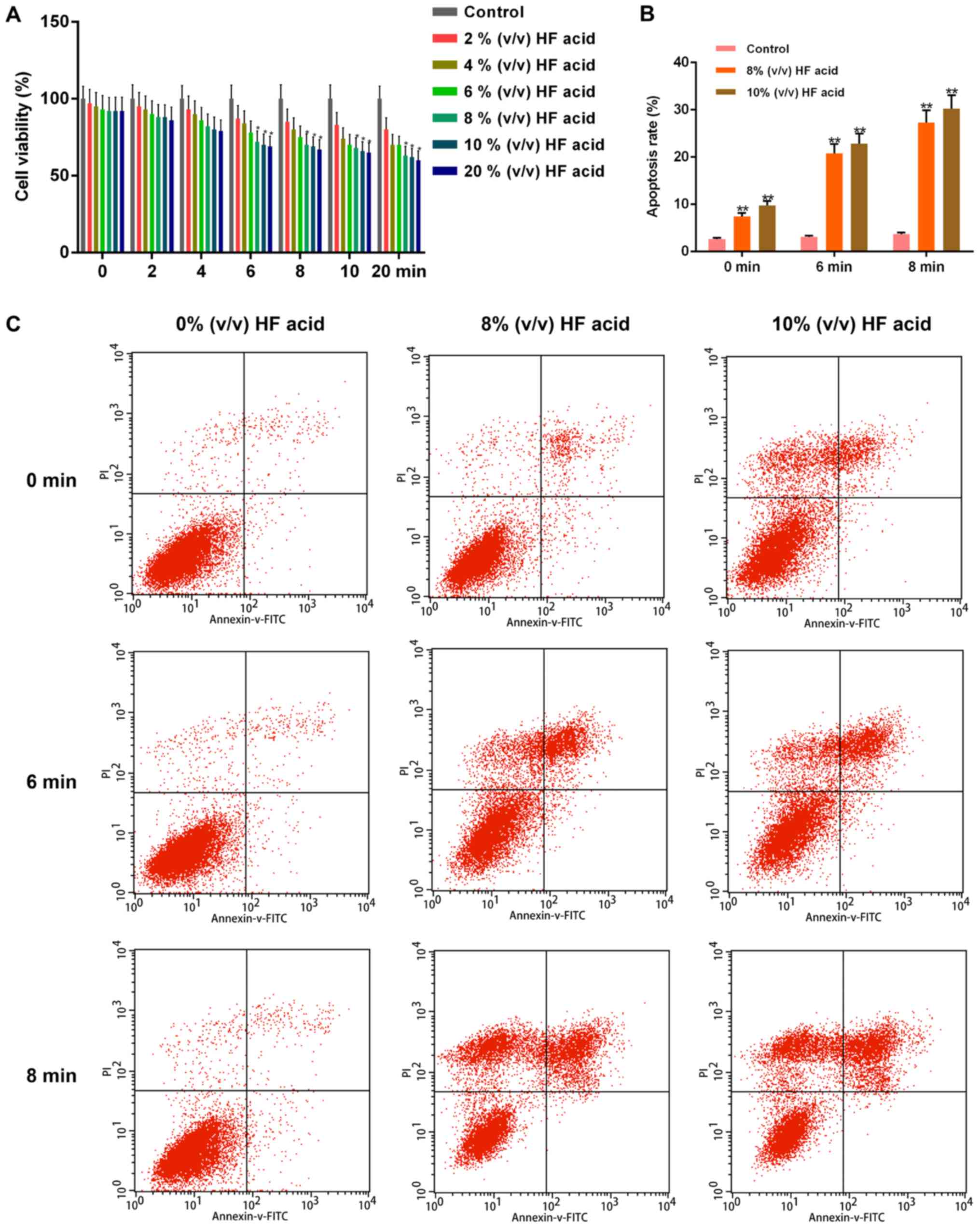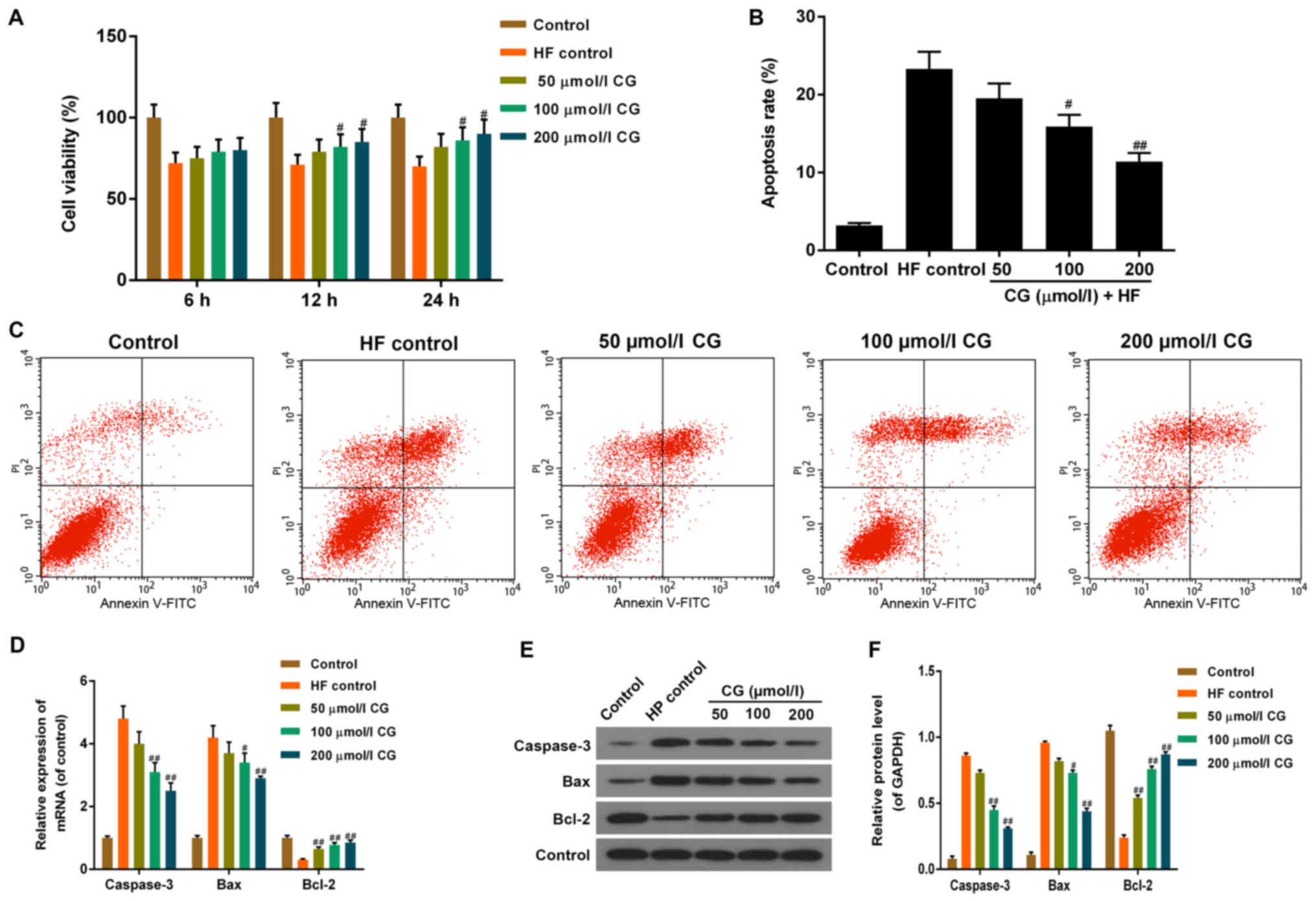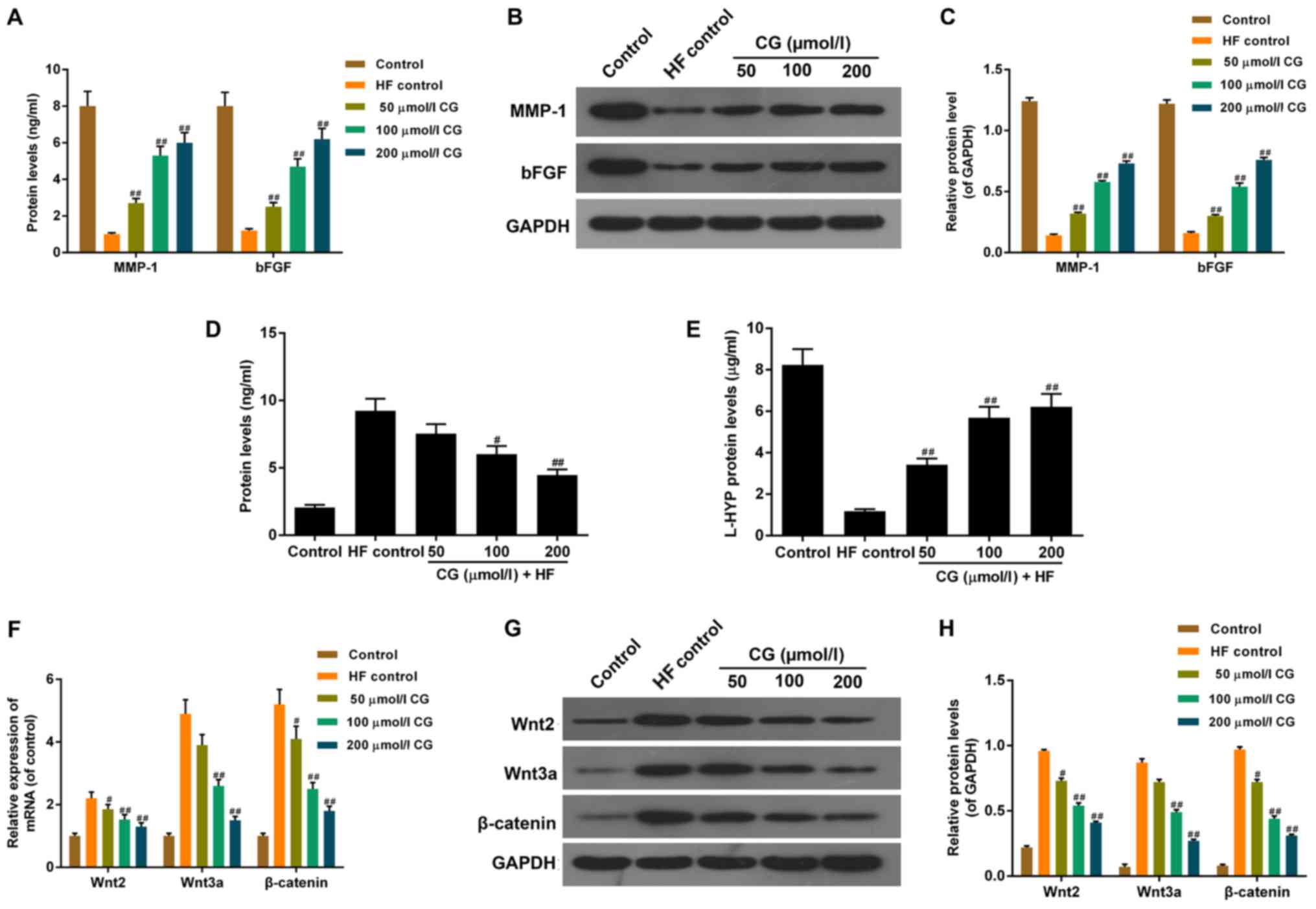|
1
|
Hojer J, Personne M, Hulten P and Ludwigs
U: Topical treatments for hydrofluoric acid burns: A blind
controlled experimental study. J Toxicol Clin Toxicol. 40:861–866.
2002. View Article : Google Scholar : PubMed/NCBI
|
|
2
|
Shamis Y, Hewitt KJ, Carlson MW,
Margvelashvilli M, Dong S, Kuo CK, Daheron L, Egles C and Garlick
JA: Fibroblasts derived from human embryonic stem cells direct
development and repair of 3D human skin equivalents. Stem Cell Res
Ther. 2:102011. View
Article : Google Scholar : PubMed/NCBI
|
|
3
|
Andriani F, Margulis A, Lin N, Griffey S
and Garlick JA: Analysis of microenvironmental factors contributing
to basement membrane assembly and normalized epidermal phenotype. J
Invest Dermatol. 120:923–931. 2003. View Article : Google Scholar : PubMed/NCBI
|
|
4
|
Smola H, Thiekötter G and Fusenig NE:
Mutual induction of growth factor gene expression by
epidermal-dermal cell interaction. J Cell Biol. 122:417–429. 1993.
View Article : Google Scholar : PubMed/NCBI
|
|
5
|
Chmielowiec J, Borowiak M, Morkel M,
Stradal T, Munz B, Werner S, Wehland J, Birchmeier C and Birchmeier
W: c-Met is essential for wound healing in the skin. J Cell Biol.
177:151–162. 2007. View Article : Google Scholar : PubMed/NCBI
|
|
6
|
Matsumoto K and Nakamura T: Hepatocyte
growth factor (HGF) as a tissue organizer for organogenesis and
regeneration. Biochem Biophys Res Commun. 239:639–644. 1997.
View Article : Google Scholar : PubMed/NCBI
|
|
7
|
Sorrell JM and Caplan AI: Fibroblast
heterogeneity: More than skin deep. J Cell Sci. 117:667–675. 2004.
View Article : Google Scholar : PubMed/NCBI
|
|
8
|
Sorrell JM, Baber MA and Caplan AI: Clonal
characterization of fibroblasts in the superficial layer of the
adult human dermis. Cell Tissue Res. 327:499–510. 2007. View Article : Google Scholar : PubMed/NCBI
|
|
9
|
Rashed L, Gharib DM, Hussein RE, Tork O
and Abusree A: Combined effect of bone marrow derived mesenchymal
stem cells and nitric oxide inducer on injured gastric mucosa in a
rat model. Tissue Cell. 48:644–652. 2016. View Article : Google Scholar : PubMed/NCBI
|
|
10
|
Scalinci SZ, Scorolli L, Meduri A, Grenga
PL, Corradetti G and Metrangolo C: Effect of basic fibroblast
growth factor and cytochrome c peroxidase combination in transgenic
mice corneal epithelial healing process after excimer laser
photoablation. Clin Ophthalmol. 5:215–221. 2011. View Article : Google Scholar : PubMed/NCBI
|
|
11
|
Gallego-Munoz P, Ibares-Frias L,
Valsero-Blanco MC, Cantalapiedra-Rodriguez R, Merayo-Lloves J and
Martinez-Garcia MC: Effects of TGFβ1, PDGF-BB, and bFGF, on human
corneal fibroblasts proliferation and differentiation during
stromal repair. Cytokine. 96:94–101. 2017. View Article : Google Scholar : PubMed/NCBI
|
|
12
|
Sokol SY: Maintaining embryonic stem cell
pluripotency with Wnt signaling. Development. 138:4341–4350. 2011.
View Article : Google Scholar : PubMed/NCBI
|
|
13
|
Labus MB, Stirk CM, Thompson WD and Melvin
WT: Expression of Wnt genes in early wound healing. Wound Repair
Regen. 6:58–64. 1998. View Article : Google Scholar : PubMed/NCBI
|
|
14
|
Okuse T, Chiba T, Katsuumi I and Imai K:
Differential expression and localization of WNTs in an animal model
of skin wound healing. Wound Repair Regen. 13:491–497. 2005.
View Article : Google Scholar : PubMed/NCBI
|
|
15
|
Konigshoff M, Balsara N, Pfaff EM, Kramer
M, Chrobak I, Seeger W and Eickelberg O: Functional Wnt signaling
is increased in idiopathic pulmonary fibrosis. PLoS One.
3:e21422008. View Article : Google Scholar : PubMed/NCBI
|
|
16
|
Konigshoff M, Kramer M, Balsara N, Wilhelm
J, Amarie OV, Jahn A, Rose F, Fink L, Seeger W, Schaefer L, et al:
WNT1-inducible signaling protein-1 mediates pulmonary fibrosis in
mice and is upregulated in humans with idiopathic pulmonary
fibrosis. J Clin Invest. 119:772–787. 2009.PubMed/NCBI
|
|
17
|
Cheon S, Poon R, Yu C, Khoury M, Shenker
R, Fish J and Alman BA: Prolonged beta-catenin stabilization and
tcf-dependent transcriptional activation in hyperplastic cutaneous
wounds. Lab Invest. 85:416–425. 2005. View Article : Google Scholar : PubMed/NCBI
|
|
18
|
Dômont J, Salas S, Lacroix L, Brouste V,
Saulnier P, Terrier P, Ranchère D, Neuville A, Leroux A, Guillou L,
et al: High frequency of beta-catenin heterozygous mutations in
extra-abdominal fibromatosis: A potential molecular tool for
disease management. Br J Cancer. 102:1032–1036. 2010. View Article : Google Scholar : PubMed/NCBI
|


















